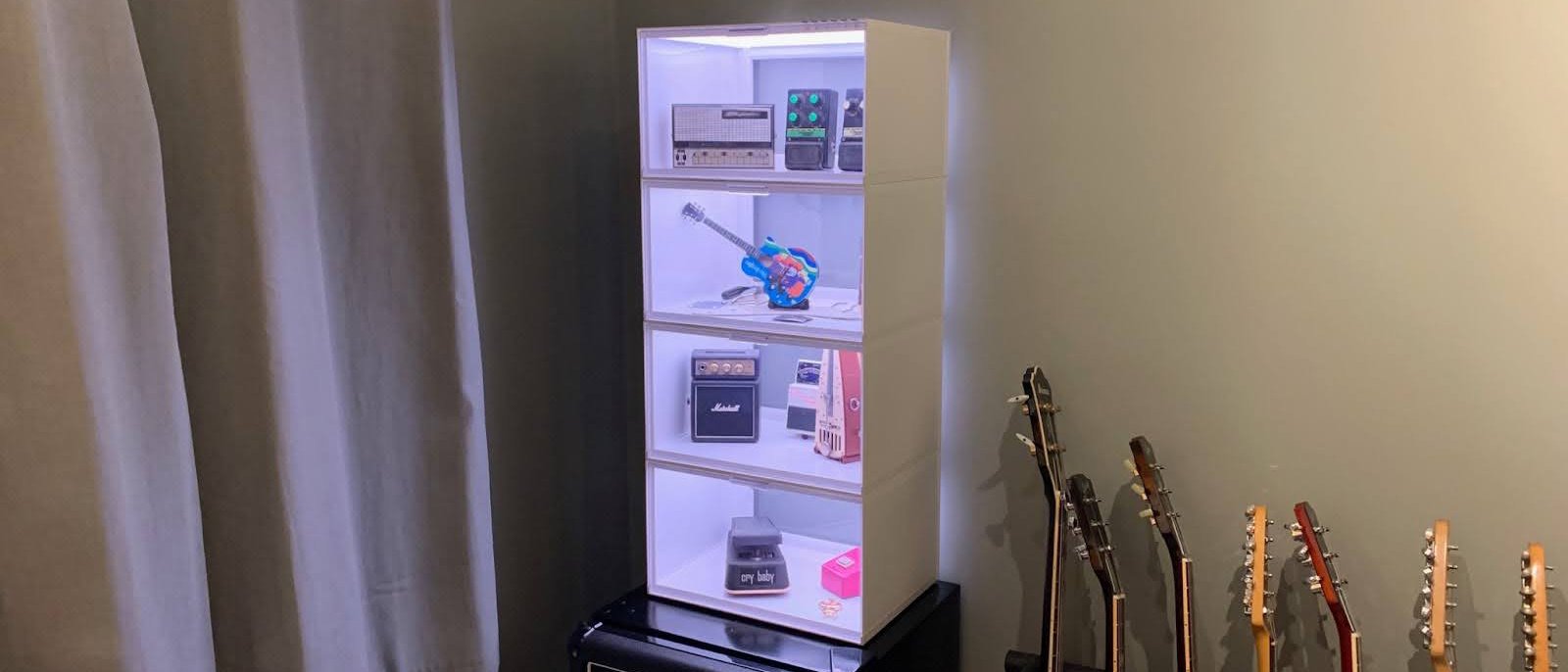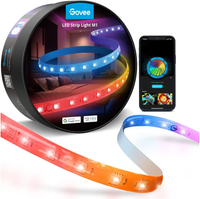TechRadar Verdict
The Nanoleaf x Fantaqi EXPO is an illuminated smart modular storage solution. Offering screen mirroring and sound activation via the Nanoleaf software plus compatibility with all of the major home automation ecosystems, Expo accomplishes wondrous things while displaying your very own wondrous things in up to 300 linked and beautifully lit cases.
Pros
- +
Works with Apple Homekit, Google Home, Alexa, Razer Chroma RGB, Corsair iCUE and MIJIA
- +
Quick and easy to assemble and remarkably robust
- +
Good range of lighting effects and colors
Cons
- -
Expensive
- -
Nanoleaf app can be troublesome
- -
Plastic build materials
Why you can trust TechRadar
Nanoleaf x Fantaqi EXPO: one-minute review
The Nanoleaf EXPO is the latest clever home contraption from they company behind some of the best smart lights around: a modular smart case solution that will see your collections displayed in glorious technicolor.
If you are one of those people who collect things (I am one of those people) you will inevitably end up with more things than places to put them. Shelves are fine, but you’ll need to dust every week (I am not one of those people), and the situation can get really out of hand if you ever move house, as most of your collections remain in the attic for months/years while you figure out where it is all going to go. Nanoleaf comes to the rescue with its attractive modular smart illuminated display case system.
Nanoleaf collaborated with US company Meeni Inc on its Fantaqi product, which is sold by Nanoleaf as the Nanoleaf x Fantaqi EXPO. What this collaboration has produced is one of those rare things that is both eye-catching and useful, even if only to collectors and smart home nerds. Each case measures 38 x 29 x 22cm (W x D x H), but you’ll want to shave off roughly 3cm to account for the thickness of the walls. To give you some idea of its scale, a DVD case will stand perfectly inside, but will need to be inserted at a slight angle to get past the lip on the front of the box.
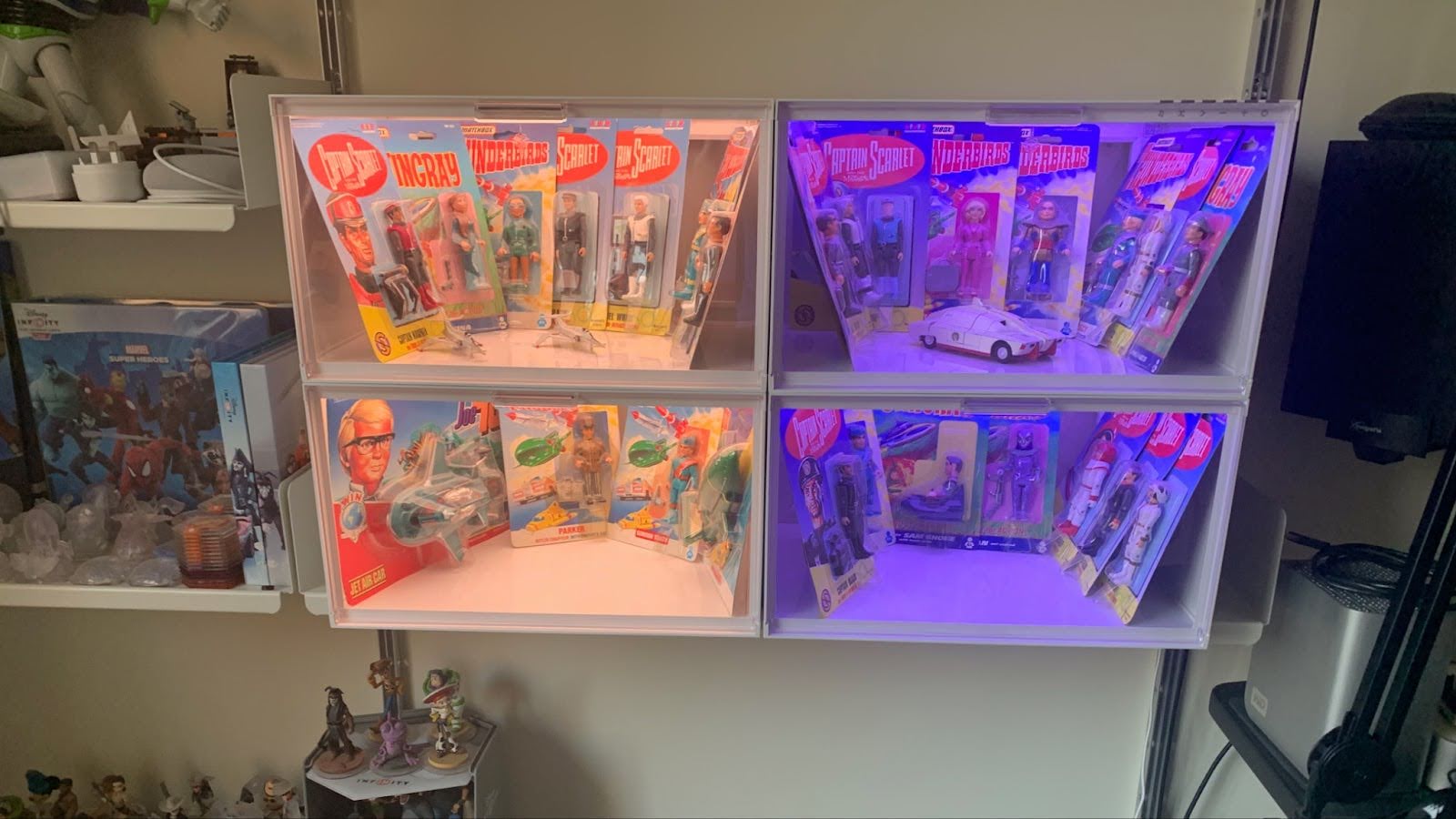
I must admit to initially being skeptical about these boxy smart lights, but once I saw them in my house brimming with some of my favorite collectibles and objet d’art, I was sold. As with the iPad and the Apple Watch, I just didn’t 'get it' until I got one. I’ve enjoyed liberating my stored collections and being reminded of why I collected all this stuff in the first place. These are a quick and easy solution to my storage problem.
Yes, they are expensive and the petulant software drives me nuts, but alternative Perspex display cases are not cheap and the EXPO’s modular design allows you to try them out in different places easily. Add to that their smart capabilities; totally worth it.
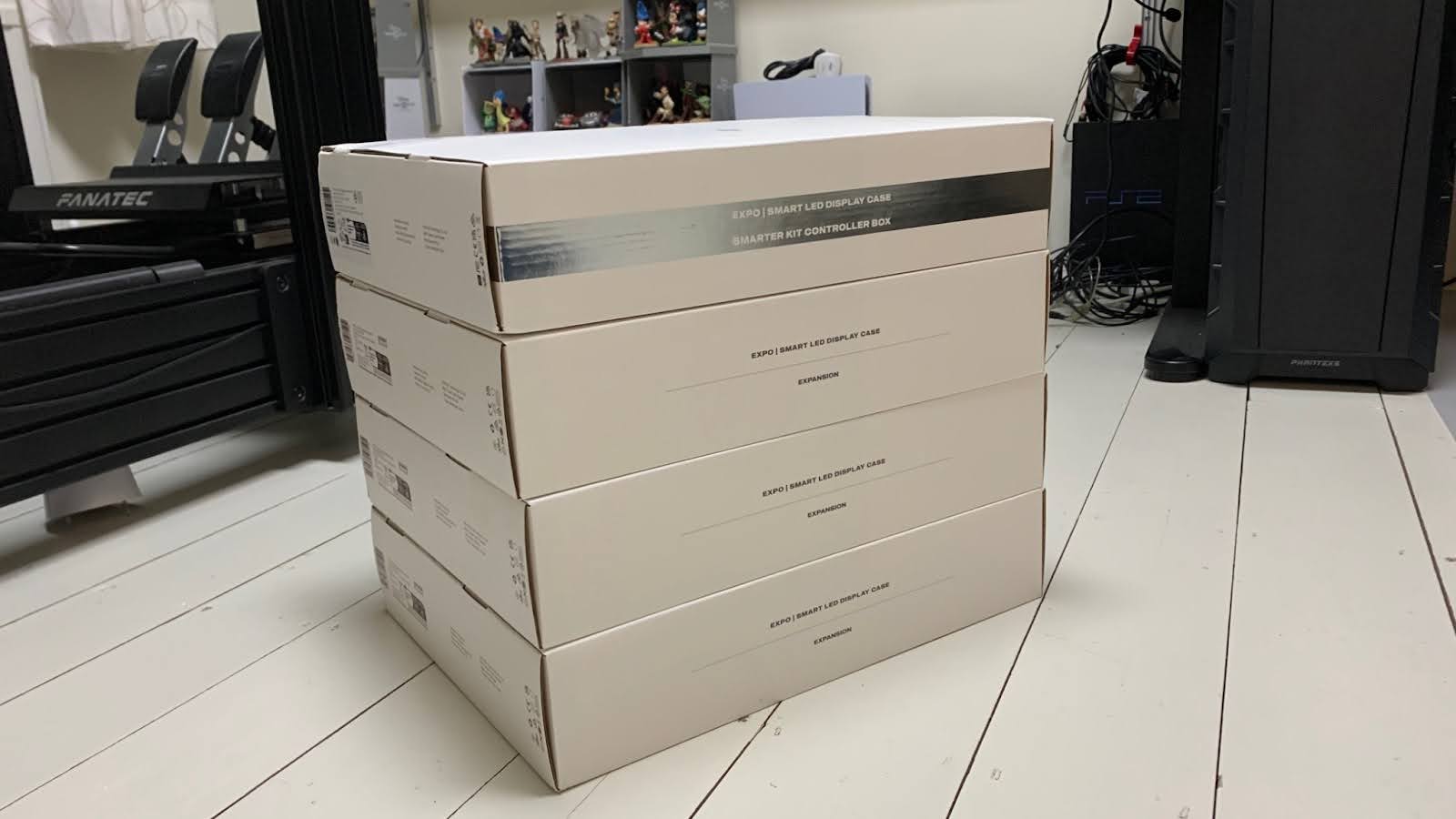
Nanoleaf x Fantaqi EXPO: price and availability
- Starter kits from $299.99 / £299.99 (about AU$440)
- Expansion kits from $69.99 / £69.99 (about AU$100)
The Nanoleaf x Fantaqi EXPO launched in August 2024 and is available from the Nanoleaf website, or from Fantaqi.
There are two accessories for the EXPO if you need more of the inter-case connectors or are expanding to a stack of more than 8 cases. The 75W power supply can power up to 14 cases.
Display case pricing
- EXPO Smart LED Display Case Starter Kit (4 Pack): $299.99 / £299.99 (about AU$440)
- EXPO Smart LED Display Case Starter Kit (8 Pack) $536.45 / £549.99 (about AU$790)
- EXPO Smart LED Display Case Expansion (1 Pack) $69.99 / £69.99 (about AU$100)
- EXPO Smart LED Display Case Smarter Kit (12 Pack) $ 800.01 (US only)
Accessory pricing
- EXPO Display Case Rigid Linkers (9 Pack): $8.99 / £7.99 (about AU$15)
- EXPO Display Case 75W Power Supply: $39.99 / £34.99 (about AU$60)
Nanoleaf x Fantaqi EXPO: specs
| Dimensions (cm) | External 38 (width) x 29 (depth) x 22cm (height)Internal 36 (width) x 25 (depth) x 19cm (height) |
| Colors | 16 million |
| Max brightness | 50 lumens |
| Smart home compatibility | Apple HomeKit, Amazon Alexa, Google Home |
| Connectivity | Wi-Fi 2.4GHz 802.11b/g/n, proprietary 2.4G protocol |
| Mobile compatibility | iOS/Android |
| Thread compatibility | Can act as a Thread Border Router |
| Maximum connected cases | 300 |
| Maximum vertically connected cases | 16 |
| Maximum displays per 42W power supply | 8 |
| Maximum displays per 75W power supply | 14 |
Nanoleaf x Fantaqi EXPO: design
- Quick and easy to assemble
- Cases are connected electrically by push-fit Linker strips
- Magnetic door latch
- Top panel of the box contains the LEDs
Aesthetically, the Nanoleaf EXPO isn’t much to write home about; each white display cube is simply designed. The real magic begins when you flick the switch to light up your life.
The system has been designed so that only the top case containing the LEDs and back panel (which has the connector slots) is 'live'. As long as you follow the provided assembly diagram you should find it easy enough to connect properly.
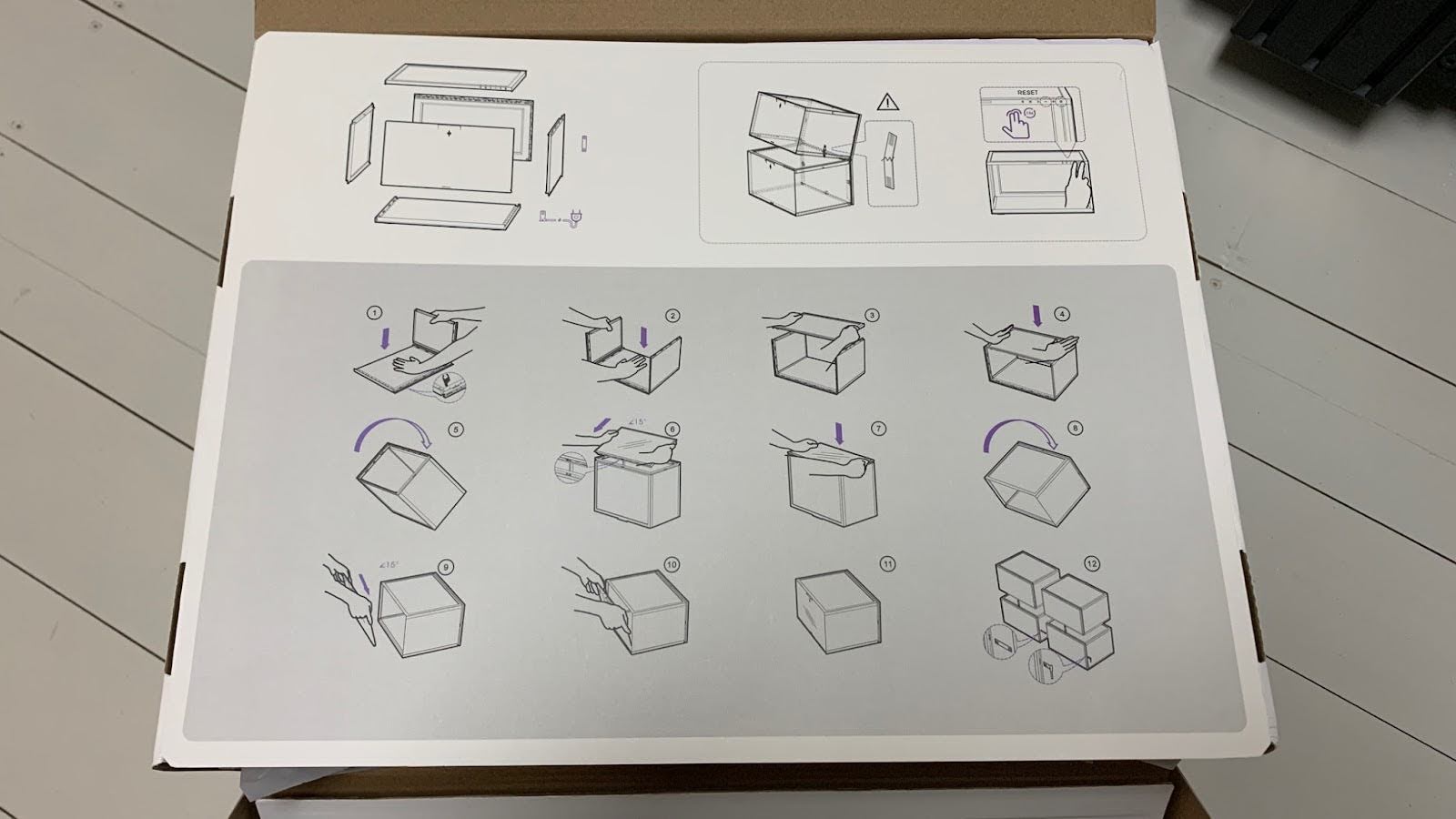
The rest of the cases are simply push-fit, but they do require a bit of force, so I would recommend that they are assembled on a non-slip surface. I worked along all of the seams with my thumbs just to make sure the seams were seated properly.
Each case has four feet, which fit into the recessed top of the case below to provide some vertical stability. Each case is electrically connected to the next one using the supplied linker strips which slot into holes midway along the sides of each case. It can be a bit tricky to get the Linker in the hole when coupling two cases but it’s a minor irritant.

I was not convinced of the stability of the Nanoleaf Expo when configured in an 8-box vertical stack, but once loaded with your collectible contents, the whole thing became more and more stable. However, it might not survive the onslaught of a small child, but why would you let them near something so precious? Are you mad?
Each case has slots running up the sides to provide a channel for the power supply lead. A slight constriction somewhere along the channel to hold the lead in place would have been nice, but it is possible to put the lead under a bit of tension by curling it under the back of the bottom-most box of the stack.
Fortunately, the power lead is 2.5 meters long which gives you the option of placing them on a shelf, and as each case weighs in at around 2kg, the shelving need not be industrial strength like mine.
I was initially puzzled by the clear back panel until I switched them on and noticed it effectively creates a pleasing halo on the wall around the stack. I also love the magnetic front door latch, as all too often fixtures like interference-fit door latches can make a whole unit wobble wildly when you open a door, or there’s some form of mechanical push-in opener that invariably fails over time. The stack does still move a little when you open a door but all is forgiven when it closes with such a resounding ‘thunk’ noise. Yes, I am one of those people who enjoy the rich sound of a high-quality car door closing.
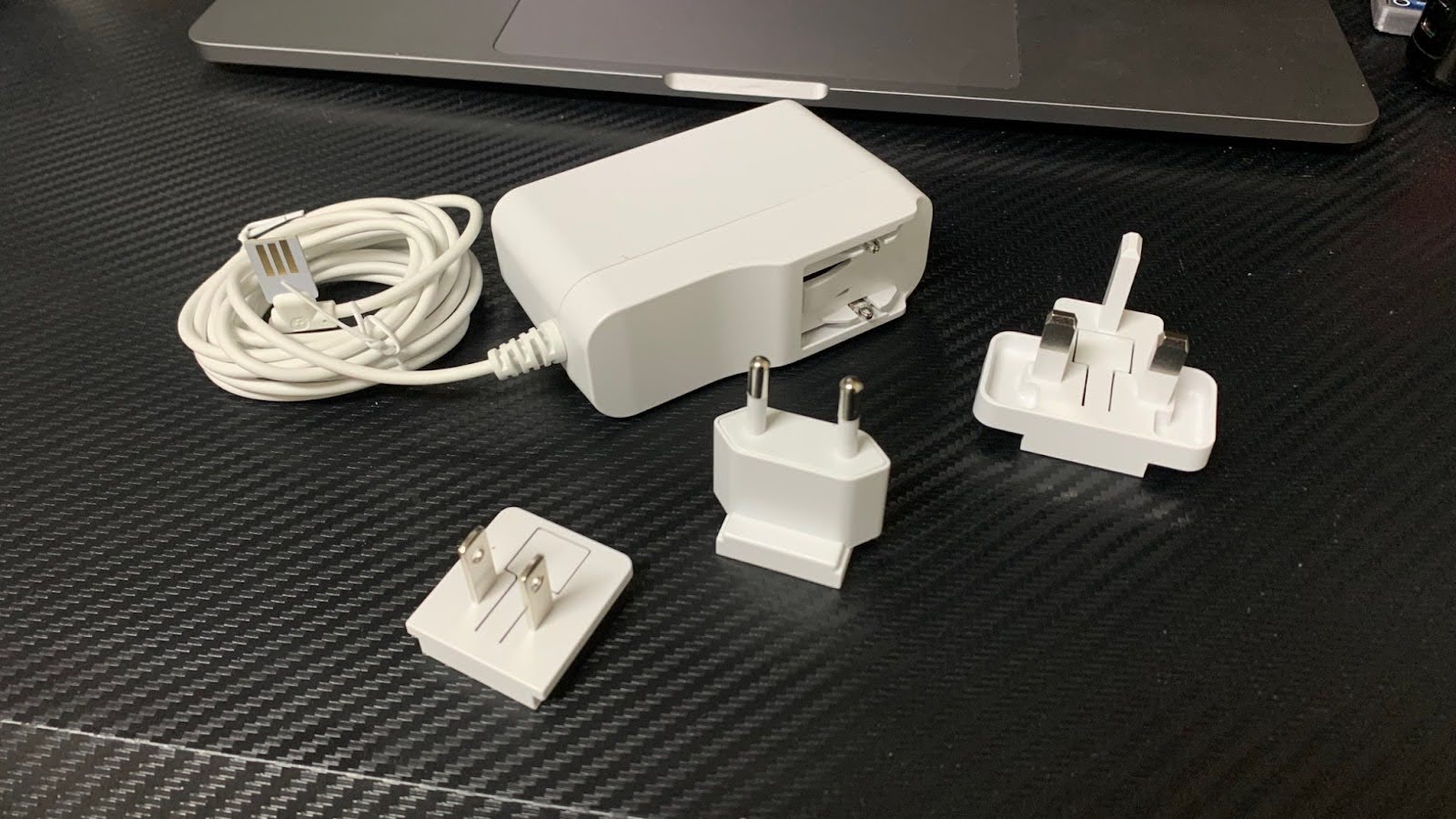
My only gripe is with the power supply plug. It’s quite attractive and it’s very cool that it has three different snap-in plug converters, but the three-pin one is upside down.
Look, Nanoleaf, most of us have so many electrical appliances that we need to use electrical extension plugboards; a lot of them. We cannot lay them flush against the wall if someone has decided to provide a plug with a lump on top with the power lead coming out of it. It makes even less sense when plugged directly into the wall, as all the weight is above the socket.
Nanoleaf x Fantaqi EXPO: performance
- Software proved temperamental
- Rhythm Source feature works well
Having reviewed several Nanoleaf products in the past, I knew that reaching the point at which you can power the hardware up is usually the easy bit. In comparison, while the universe descends cyclically from order to chaos over billions of years, the Nanoleaf app will give you a sneak preview of that chaos in just a few hours. After six wasted hours of crashes and bugs (including the infamous 'Accessory already in another home' message from HomeKit) I decided to give up on the EXPO for the day.

I am sure it will come to pass that it will start working but it’s frustrating that Nanoleaf specifies features that initially do not work. There is better news for the rhythm source feature of the Nanoleaf desktop application on Mac; it now works as it should, much to my delight. The Mac app still crashes regularly though.
I love this product and I want Nanoleaf to continue coming up with original, if somewhat niche, products, but I do hope the company begins to do a little more software quality assurance before products launch and not after. I am willing to accept that some of my problems may be PICNIC problems (problems in customer not in computer), but not the majority of them. What troubles me is that people will stop buying Nanoleaf products if they have the same experience.
Should you buy the Nanoleaf x Fantaqi EXPO?
Buy it if
You need a flexible storage system for your treasured possessions
They can be quickly tried out in different positions and configurations around the home.
You have other Nanoleaf devices
If you’re already pretty stocked up with some of Nanoleaf’s other brilliant bulbs, strips, and shapes, then the Nanoleaf EXPO makes for a perfect addition.
Don't buy it if
You're on a budget
These are entirely unique products, yes, but that comes at a price. Head to a flat-pack furniture store and stock up on smart light strips for a DIY solution.
You need a bookshelf
The Nanoleaf EXPO is not really strong enough or big enough for books.
Nanoleaf x Fantaqi EXPO: also consider
As was the case when I reviewed the Nanoleaf Skylight, there isn’t an equivalent product for the Nanoleaf x Fantaqi EXPO that I am aware of. However, if you want to create a DIY system using smart LED strip lights instead. there are a few options available.
Govee LED Light Strip M1
These super bright LED strip lights could be used to liven up an ordinary bookcase or display case. It's easy to install and a great option for beginners.
Read our full Govee LED Light Strip M1 review
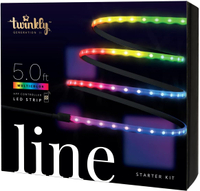
Twinkly Line
These fun smart lights come in short strips ideal for small areas, and you can sync them with other Twinkly products to create a larger 'canvas'.
Read our full Twinkly Line review
How I tested the Nanoleaf x Fantaqi EXPO
- I tested the cases in different configurations
- I tested the Nanoleaf applications for known existing problems
- I tested its compatibility with Apple Homekit
- I tested EXPO in conjunction with other Nanoleaf devices
I ensured that my test environment was up to date and working with the latest versions of firmware and software for all devices before even unpacking the Nanoleaf x Fantaqi EXPO. I visually checked the status of Apple Homekit every time the application crashed and visually checked the status of the application itself on restart and investigated any anomalies.
I investigated the phone application automation options and tried out the various in-app features and functionalities.
I’ve been using smart home devices for several years now, and have a whopping 30+ years (gulp) of tech enthusiasm and experience under my belt.
For 20 years, Les has worked in and around software development, meaning he's a pretty dab hand with a computer. Beyond that, he's known as "Gadget-man" to his friends, constantly in search of the latest and greatest tech to geek out over. In his spare time, you'll find Les in his man cave, also known as "the Lab", whether he's trying out 3D modeling and printing, gaming, practicing software development, or playing with electronics. He's a huge F1 fan, a lover of all things Star Wars and DC, and an avid LEGO builder.
